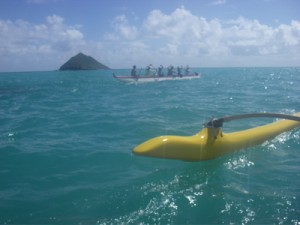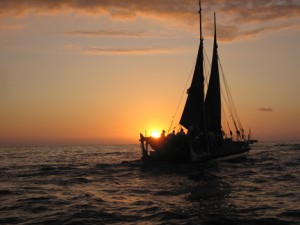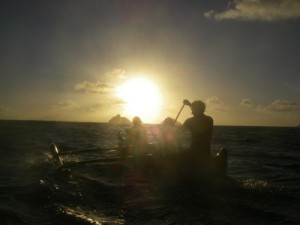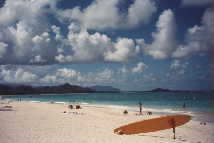
I am in the process of developing a new section of this website specially dedicated to school students and teachers. It will include suggestions for lesson plans, discussion topics and practical projects. Over the coming months I will be working with a few selected teachers from various schools across the world, but initially want to put out these questions to anybody reading this site, but especially school students:
- Do you have any lessons about the environment? If so, what environmental subjects do you learn about? e.g. Climate change? GMO? Ocean conservation? Anything else?
- Do the lessons say anything about how humans affect the environment, and how it affects us? What do the lessons say about interaction between man and the world?
- Do you have any school projects linked to looking after the environment in a hands-on kind of way? e.g. local conservation projects, or litter clean-ups?
It would be really helpful if you can write to me with your answers using the Contact form. This information will be invaluable to me in finding out more about what is happening in environmental education at the moment, and maybe spark off some ideas about what would be helpful for the future.
This is your chance to contribute not only to my website, but also to an education program that will be used by schools all over the world. Thank you!
P.S. Apologies for not blogging for several days. My plane did not fall out of the sky on the way back from Hawaii, and I am still very much alive, just a) very busy and b) frequently offline and c) not wanting to bore you with too much information about daily happenings which, although very important to my overall project direction, may not be of immediate interest to you.
If you REALLY want to know, I've had lots of useful meetings (notably with NOAA, BEACH, and various individuals both in Hawaii and Seattle), given a successful presentation at the wonderfully welcoming Waikiki Yacht Club, went paddling with Donna of nonprofit Kai Makana, and made an appearance on the KHON TV Morning Show in Honolulu.
|
|

... the crew of the Hokule'a would not be the slightest bit bothered. This traditional canoe recently voyaged to Micronesia, Satwal and Japan, relying on traditional wayfinding methods using the stars, ocean swells, cloud formations and bird sightings to reach their destinations.
[Click here for video]
This morning I went to meet a student of this ancient art and take a look around the canoe. Ka'iulani Murphy showed me the vessel that was their home for 5 months earlier this year. The first thing I noticed was the construction - not a nut or a bolt in sight, just lots of rope lashings.
The second thing was that there is no real "below decks" area - from the central deck there are just canvas screens that unzip to reveal long rows of bunks, end to end, along the lines of the two pontoons of the double-hulled canoe.
The canoe looks very seaworthy, but not very comfortable - a bit like my boat, really.
Ka'iulani told me that, even though she has been studying wayfinding for over 7 years now, she is still learning. Not all the skills can be learned from books - the subtleties of sensing changes in direction of wind or swells have to be experienced to be fully understood.
My interest had initially been to find out more about wayfinding - I am interested in it from a very practical point of view for my own voyages (just in case), but also as an example of a traditional wisdom that is now being successfully revived and passed on to a new generation. There are countless other examples of native skills that worked well for centuries but have unfortunately now died out forever, obliterated by the world of technology, so it was encouraging to find a success story.
We found lots more to talk about as well, including the concept of malama honua. This Hawaiian expression means "caring for our world", but it has broader and deeper implications too. Like gaia, it recognizes that the health of the land, the health of the oceans, and the health of all living creatures, including us, are inextricably linked. If one part of the organism is sick, then the other parts will be affected too.
This brings me back to my mission for the first part of my Pacific row - to draw attention to the problem of plastic debris in the oceans, and to emphasize that it is not just a problem "out there". I am looking into how I can develop an educational section on my website that will build on existing online resources to create discussion topics for schools to bring these issues into the classroom. And I also intend that next year, when I am in Hawaii for a bit longer, I can get involved in a very hands-on way, with beach clean-ups and the like. This way, I will be involved in both prevention AND cure.
[photo: Hokule'a, courtesy of Polynesian Voyaging Society website]
|
|

Along with surfing, loud shirts, floral garlands and hula dancers, outrigger canoes are what Hawaii is famous for, so I felt it was important that I should give it a try in the hope of understanding better the culture of these far-flung islands. I am also deeply absorbed in a fascinating book on the ancient Pacific art of wayfinding - the method the Polynesians used to navigate from one island to another by observing the stars, clouds and migration patterns of birds, long before the invention of compasses or GPS.
After several nearly-but-not-quite missed opportunities, this morning I went out for a paddle at dawn with my friend Mariya and her housemate Dan. I had hoped that my rowing background might stand me in good stead, but found that, other than involving water, a boat and human power, paddling is nothing like rowing.
For starters, there were three of us in the boat. Odd numbers don't work too well in crew rowing as you'd go in circles. (Note: properly speaking, rowing involves each rower having one oar apiece, set to one side or other of the boat. Rowing with two oars, one in each hand, as I do in my ocean rowboat, is actually called sculling.]
Second, the paddling movement is very much DOWN, powered by the hand on the top of the paddle, rather than the sideways sweep of a rowing blade.
And third, in rowing (on rivers at least) you rarely get the chance to surf - and if you do you are not grateful for it. This morning we paddled out to an area alongside Flat Island (imaginatively named) where some decent-sized waves were rolling towards the shore. Catch it right, and you get a free ride at high speed. Catch it wrong, and you end up with a boat full of water and a lot of bailing to be done. Hmm, maybe not so different from ocean rowing after all...
It was a LOT of fun, and I can't wait for my next chance to give it a go. Conditions were too rough this morning for a novice, but I would LOVE to try my hand in a one-man outrigger before I leave. Watch out, Margo!
[photo above: Mariya, me and Dan, at dawn this morning, with the 'Mokes' islands in the background.
photo below: Surfin'!]

|
|

This morning I went for a swim in the ocean - I am finding that the sting of the saltwater helps clear my blocked sinuses, at least temporarily. As I luxuriated in the clear blue waters washing up on a white sandy beach, I thought about the evil oily blight currently afflicting the San Francisco Bay.
I first became aware of it last Friday when my friend Paul Nordquist from the South End Rowing Club (located by Fisherman's Wharf in downtown SF) wrote to say they can't row on the Bay at the moment because of an oil spill.
Then this morning David Helvarg, president of the Blue Frontier Campaign, emailed me a link to this article he wrote for the Los Angeles Times.
As he says at the end of his article - we all need to do something. The question is: what? A good place to start is with David's upbeat book, 50 Ways to Save the Ocean.
I am looking at how I can do more. I want to move from my row's stated goal of 'raising awareness' of the ocean crisis to doing something tangible and measurable (back to the SMART criteria again). Securing corporate sponsorship for a beach clean-up in Hawaii maybe? Even the beaches on uninhabited islands here are sometimes afflicted by piles of trash. Or possibly figuring out a way to get the message to the coastal communities of Mexico and South America, for whom leaving rubbish on the beach and waiting for the next storm to whisk it away is a widely practiced method of waste disposal.
In the meantime, another good way to help save the oceans is to donate to the Blue Frontier Campaign, which supports grassroots (aka 'seaweed') groups in their efforts.
A fine example was set by my friend Mariya, who I am staying with here in Hawaii. She had a birthday party on Sunday and asked her guests if, rather than buying presents (thereby contributing to consumerism and damaging the environment), they would make a donation to Blue Frontier Campaign (thereby helping the environment). A useful few dollars were raised, and a great time was had by all.
[photo: Kailua Beach]
|
|